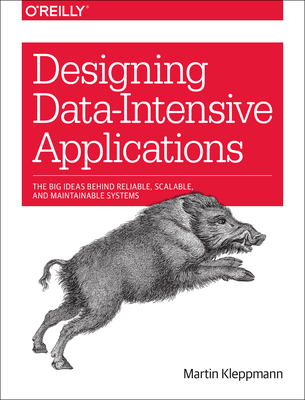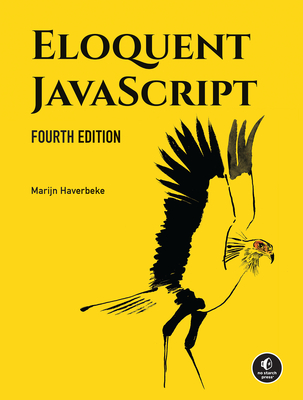Fast Track to Servlets/JSP Using Rational Application Developer (RAD) Training in Providence
|
We offer private customized training for groups of 3 or more attendees.
|
||
Course Description |
||
| This course is a comprehensive tutorial in the design and programming of
Java Web applications using servlets and JSP. It starts with Web
application architecture, usage, and deployment. It teaches about the
capabilities of servlets, servlet architecture, and session management,
JSP structure and syntax, and good design techniques for using them.
Extensive coverage is included on how to efficiently use the JSP
Expression Language (EL), custom tags, and the JSTL library. The course
is current with the latest releases of the specification, and uses the
latest capabilities to write Web applications in the most efficient way
possible. This includes the use of the JSP Expression Language directly
in JSP 2.0+ Web pages, an overview of creating custom tags with tag
files, and other new capabilities that make the framework much more user
friendly. The complete course will give you excellent experience on how
to build robust and capable Web applications using the latest features
of the Java EE Web container. All labs are done using the RAD
Development Environment, and the lab instructions include detailed
directions on using RAD and the RAD wizards and tools.
Course Length: 3 Days
Course Tuition: $1290 (US) |
||
Prerequisites |
|
| Suitable for programmers with some previous experience in working with Java and Object-Oriented (OO) programming. | |
Course Outline |
|
Session 1: Web Application Basics
How the Web works, Thin Clients, TCP/IP
HTTP overview, Brief HTML review
Overview of J2EE
Web Applications - Structure and Contents
Servlet Basics and Capabilities
Basics of Writing a Servlet
Labs:
Setup development environment and server; Create a simple web application
Create a Simple Servlet
Session 2: Servlet API
HTML Forms Review
HTTP Review: Request-response, headers, GET, POST
Overview: How Servlets Work
Servlet Lifecycle: init(), service(), destroy()
API: Servlet, ServletConfig, ServletRequest, ServletResponse, GenericServlet,
Requests and Responses - Using ServletRequest and ServletResponse
HTTP Servlets: HttpServlet, HttpServletRequest, HttpServletResponse
Accessing Parameters
More About web.xml
Labs:
Using Client Input, Retrieving parameters
Session 3: Additional Servlet Capabilities
Working with HttpServletResponse
Status/Errors
Response Headers
MIME Types
Initialization
Overview
Using ServletConfig and ServletContext
Init Parameters - Servlet and Web App
Error Handling: Error Pages and Their Configuration
Labs:
Using Model Classes, Generating Simple Output
Session 4: JavaServer Pages
Basics and Overview
JSP architecture
JSP tags and JSP expressions
Fixed Template Data
Lifecycle of a JSP
Model View Controller (MVC)
Overvie
Java EE Model 2 Architecture : Servlet Controllers, JSP Views, JavaBeans Glue
Servlets as Controllers
Using RequestDispatcher
Forwarding and Including
Data Sharing in a Web App
Object scopes or "buckets"
Using JavaBeans to Hold Data
Using the Scope Objects - get/set/remove Attributes
Request, application, session and page scope
JSP Expression Language (EL) and Data Access
JSP EL Overview
JavaBeans and the EL
Predefined JSP EL implicit objects (pageContext, param, header, scope objects)
jsp:include, jsp:forward, the page Directive
Labs:
Create a Simple JSP Page
Put Data on a Scope and Forward to a JSP
Use the JSP Expression Language
Session 5: Using Custom Tags
Custom tags overview
Reducing JSP complexity
Tag Libraries
Overview and TLD (Tag Library Descriptor)
taglib Directive - Using a Tag Library
JSTL
Overview
c:out, c:forEach
c:url, c:param
Labs:
Use c:forEach for Iteration
Working with Links and c:url
Session 6: HTTP Session Tracking
HTTP Session Overview
HTTP as a stateless protocol
Hidden form fields
Cookies
Overview and Servlet API
Using Cookies, Persistent and Session Cookies
Issues
Sessions
Servlet/JSP Session Support, HttpSession
Using Sessions - Putting Data in, Retrieving Data From
How Sessions Work
Labs:
Storing and Using Session Data
Session 7: More JSP Capabilities
Error Pages
Error Pages and Exception Handling
The implicit exception Object
JSP 2.0+ Error Handling and errorData Object
Directives (page, include, others)
JSPs as XML Documents
Scriptlets - Overview and Usage
Labs:
Using Error Pages
{optional} Using Scriptlets
Session 8: More JSTL and EL
More About the JSTL
Core, Formatting, SQL, XML, Functions Libraries
Custom Tag Architecture and Tag Library Structure
c:if, c:choose, c:import
Formatting: formatNumber, formatDate, Resource Bundles
Using Common Tags
XML Action Example
More About the JSP EL
Syntax, Identifiers, Literals, Operators
Implicit Objects
The pageContext in Detail
Type Coercion
String concatenation
Using Common Tags
c:if, c:choose
c:set
fmt:formatDate, fmt:formatNumber
Labs:
Using c:if, c:choose, c:when and c:otherwise to customize output
[Optional]: Using the Function Library
JSTL Format Tags
Session 9: Security
J2EE Security Overview
Role Based Security
Declarative Security
Web Authentication - Basic, Form-Based, Digest, HTTPS Client
Using Basic Authentication
Using Form-Based Authentication
Programmatic Security - HttpServletRequest, Retrieving Roles
Labs:
Securing a Web App, Setting Up and Using a Security Domain
Session 10: Additional Topics
Design Issues
Dividing Responsibilities Between Servlets/JSP
Network Overhead
Scalaibility - Clustering, Serving Static Content
Other Guidelines - Using the Technology Well
Custom Tags Using Tag Files
Overview and Writing Tag Files
Tag Attributes
The tag Directive
Servlet Filter overview
Filtering examples, lifecycle, & filter chains
Filter API, Modifying a request, Modifying a response
Java ServerFaces (JSF) Overview
Advanced MVC – JSF overview
JSF Components
Process Flow
Advantages and Disadvantages
|
Course Directory [training on all levels]
- .NET Classes
- Agile/Scrum Classes
- AI Classes
- Ajax Classes
- Android and iPhone Programming Classes
- Azure Classes
- Blaze Advisor Classes
- C Programming Classes
- C# Programming Classes
- C++ Programming Classes
- Cisco Classes
- Cloud Classes
- CompTIA Classes
- Crystal Reports Classes
- Data Classes
- Design Patterns Classes
- DevOps Classes
- Foundations of Web Design & Web Authoring Classes
- Git, Jira, Wicket, Gradle, Tableau Classes
- IBM Classes
- Java Programming Classes
- JBoss Administration Classes
- JUnit, TDD, CPTC, Web Penetration Classes
- Linux Unix Classes
- Machine Learning Classes
- Microsoft Classes
- Microsoft Development Classes
- Microsoft SQL Server Classes
- Microsoft Team Foundation Server Classes
- Microsoft Windows Server Classes
- Oracle, MySQL, Cassandra, Hadoop Database Classes
- Perl Programming Classes
- Python Programming Classes
- Ruby Programming Classes
- SAS Classes
- Security Classes
- SharePoint Classes
- SOA Classes
- Tcl, Awk, Bash, Shell Classes
- UML Classes
- VMWare Classes
- Web Development Classes
- Web Services Classes
- Weblogic Administration Classes
- XML Classes
- RHCSA EXAM PREP
17 November, 2025 - 21 November, 2025 - Fast Track to Java 17 and OO Development
8 December, 2025 - 12 December, 2025 - RED HAT ENTERPRISE LINUX SYSTEMS ADMIN II
8 December, 2025 - 11 December, 2025 - Introduction to Spring 6, Spring Boot 3, and Spring REST
15 December, 2025 - 19 December, 2025 - Python for Scientists
8 December, 2025 - 12 December, 2025 - See our complete public course listing
Java Programming Uses & Stats
|
Difficulty
|
Popularity
|
Year Created 1995 |
|
Pros
Most Commonly Used:
Great Career Choice:
Android Apps Development:
It Can Run On Any Platform:
Great Supporting IDE's: |
Cons
Uses a Lot of Memory:
Difficulty in Learning:
Slow Start Up Times:
Verbose and Complex Code:
Commercial License Cost: |
| Java Programming Job Market |

Average Salary
|

Job Count
|

Top Job Locations
New York City |
|
Complimentary Skills to have along with Java Programming
- If you are an experienced Java developer, learning a complimentary language to Java should come much more naturally. As an example JetBrains recently created the Kotlin programming language which is officially supported by Google for mobile development. Kotlin compiles to Java bytecode and runs on the JVM; it's purported to address many of Java's shortcomings... |






